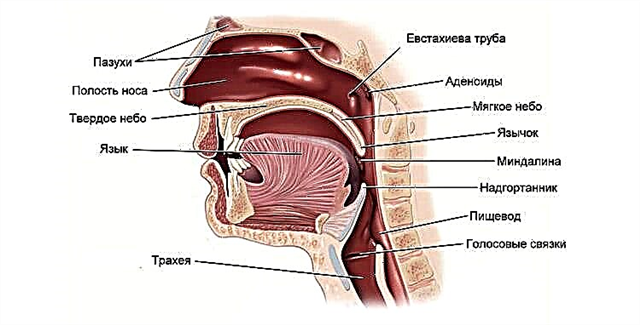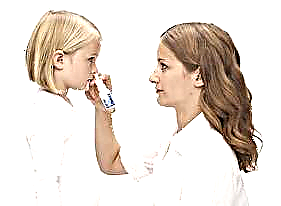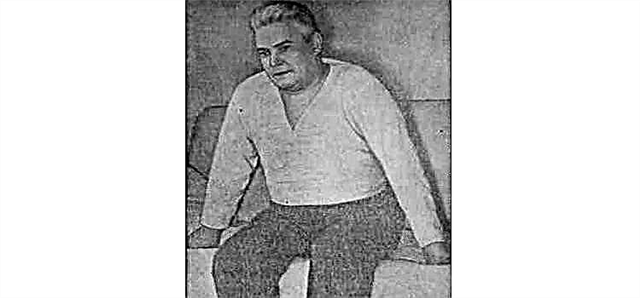Cardiovascular pathologies occupy a leading position among the causes of general mortality. One of the most life-threatening diseases is myocardial infarction. Its development is directly influenced by age, smoking, unhealthy diet, low physical activity, hypertension and the presence of excess weight and diabetes mellitus. But, of course, the abuse of alcoholic products occupies a special position. As a practicing specialist, I have repeatedly encountered this pathology, and in this article I will try to tell you about it in detail.
Alcohol and heart attack: why the risk is increased
Heart attacks and alcohol have gone side by side for hundreds of years. And the mutation itself in the enzyme alcohol dehydrogenase, which allowed man to break down ethanol, occurred back in the days when he learned to make fire and chased mammoths with a stone ax. The fact that our bodies contain endogenous alcohols suggests that alcohol consumption is not a critical factor. Just as easily, carbohydrates, table salt and animal fats can be blamed for diseases of the heart muscle, which can lead to hyperglycemia, hypertension and atherosclerosis.
Alcohol-containing substances affect the heart muscle as follows:
- cause spasm of the muscular membrane of the vessels;
- increase blood pressure numbers;
- increase the heart rate;
- promote the release of potassium from cardiomyocytes;
- increase the loss of magnesium;
- potentiate free radical damage;
- have a toxic effect on the processes of protein formation;
- disrupt the conjugate work between the processes of arousal and contraction.
These influences depend on the frequency and quantity of alcoholic beverages consumed. Low to moderate doses, in turn, have very unique effects. In one of the large clinical trials, a 37% reduction in the risk of myocardial infarction was demonstrated when ethanol-containing substances were consumed in an acceptable amount 5-6 times a week. It was attended by over 38 thousand men. In another similar large-scale study, this figure was as much as 42%. The cardioprotective mechanism is associated with the ability of ethanol to increase the level of beneficial high-density lipoproteins and antiplatelet effects.
Nevertheless, alcohol was not recognized as a mass prevention of CVD diseases, since its use is rather difficult to control. So, for example, in Russia, mortality from heart pathologies associated with the intake of alcohol-containing substances is over 36%, and among those suffering from chronic alcoholism, 50% or more. Sudden cardiac death occurs in 10% of these patients.
During my practice, I have noted one important feature. Heart attacks in alcoholics are often pain-free. In this way, it is similar to a heart attack that occurs in diabetes mellitus. Long-term abusers can feel the manifestations of the disease only after a few days. Symptoms of an alcoholic heart attack do not differ from the classic one.
The first signs are:
- burning, baking, pressing pains in the sternum;
- irradiation of pain to the left shoulder blade, arm, shoulder, back, less often to the area of the lower jaw and the right half of the body;
- shortness of breath, feeling short of breath;
- a feeling of fear of death;
- dizziness, severe weakness;
- interruptions in the work of the heart (extrasystole, atrial fibrillation, AV block, etc.);
- less often vomiting, impaired speech, vision, coordination of movements, cough and pallor of the skin.
Extensive alcoholic myocardial infarctions, accompanied by the death of more than 40% of the heart muscle, are manifested by signs of cardiogenic shock:
- a pronounced drop in blood pressure;
- signs of left ventricular failure (pulmonary edema);
- decreased urine output (oliguria, anuria);
- soporous or coma.
Based on personal experience, I can say that the effect of alcohol on the development of a heart attack is ambiguous. With minimal use, I noticed a decrease in the incidence, but in regular drinkers, it is much more common.
Impact on recovery
The rehabilitation period in persons with acute myocardial infarction depends on the severity of the disease. With an insignificant amount of necrosis, recovery takes about 6 months on average. In the presence of extensive damage to the muscular membrane of the heart and its complications (aneurysms, Dressler's syndrome, chronic heart failure, postinfarction angina pectoris, and others), the periods increase markedly.
Alcohol after a heart attack is recommended by modern cardiological associations to prohibit all patients, without exception. My practice shows that under its influence there is a lengthening of the recovery interval, and the risk of repeated heart attacks increases significantly.
The negative effects of alcohol on rehabilitation include the following:
- increased blood pressure;
- deterioration of the blood picture;
- depression of cardiac function.
For more interesting information (as well as recommendations from the Mayo Clinic) about the effect of alcohol-containing drinks on pressure, pulse and other parameters of the cardiovascular system, see our channel in the video below.
Allowable Doses
The current recommendations of the United States (ACC / AHA), the Russian and European Cardiological Communities (ESC) allow the use of alcoholic products in terms of pure alcohol (that is, 98%) in the following dosages:
- for men - 28 g / day;
- for women - 14 g / day.
For males, this corresponds to about 60 ml of vodka, 200 ml of wine or 400 ml of beer. Evidence-based medicine class - IIB. Excessive consumption has serious health consequences. But most people, especially men, are interested in whether it is possible to drink beer after a heart attack.
Traditional recommendations for patients with a history of myocardial infarction are to completely avoid alcohol of any kind. However, according to the results of one of the significant studies published in the European Heart Journal in 2012, males who completely gave up alcohol were in a less advantageous position. The risk of mortality from cardiovascular disease in this category was higher than in those who consumed no more than 1-2 glasses of red wine daily.
The highest survival rate among 1818 observed men was shown by patients who consumed alcohol after a heart attack and before it in an acceptable volume. With regard to women who have suffered a cardiovascular accident, the issue of alcohol intake has not been investigated and remains open.
In relation to alcohol, there is a fundamental difference between European and Russian scientific schools. The latter insist on a complete refusal, and I fully agree with their opinion. I also advise my patients to avoid alcoholic beverages, especially after an acute myocardial infarction.
Alcohol and stenting
Stenting is a method of treating heart disease that implies prosthetics of the coronary arteries with a special stent - a metal tube with wire cells. Thanks to the surgical procedure, the narrowed vascular lumen is restored.
Currently, there are over 400 variations of stents. They are small in size, compatible with human tissues, have sufficient flexibility and elasticity, which allows you to maintain the walls of the vessels affected by atherosclerosis.
A significant breakthrough was the use of stents with a specific coating that release drugs for a long time. They prevent excessive proliferation of the inner arterial membrane (intima), which contributes to increased occlusion. Modern capabilities have helped to achieve successful results in 95% of cases. The procedure lasts about half an hour, has practically no complications, and the simplicity and bloodlessness of the manipulation allows the patient to be discharged home after 1-2 days.
An alternative, but more time-consuming operation for heart ailments is bypass surgery. It consists in creating an additional pathway bypassing the affected coronary artery.
An important aspect after cardiac surgery is adherence to a proper diet. It includes the complete absence of alcohol for at least 1 year. In most cases, it is for this period that blood thinning (antiplatelet, anticoagulant) drugs are prescribed - Plavix, Warfarin, Dabigatran, Rivaroxaban. These drugs are not compatible with alcohol-containing substances, so I do not recommend drinking alcohol with them after stenting or heart attack. The role of non-alcoholic products, including beer, has not been studied.
In the future, alcohol intake in patients who have undergone stenting or bypass surgery is quite possible in minimal and moderate dosages. For example, the amount of red wine should not exceed 1 glass per day. Long-term studies proving the harm of alcoholic products after manipulation have not been conducted.
Expert advice
- Drink alcohol only in the recommended dosages, but do not forget that each organism is different.
- Remember, only systematic abuse of alcoholic beverages, including beer, can lead to a heart attack.
- Myocardial infarction in alcohol abusers is often painless. The first symptom is sudden shortness of breath. If you have one, urgently call an ambulance.
- Avoid alcohol-containing substances completely during the first year after stenting.
Clinical case
A 55-year-old man came to me for an outpatient appointment with complaints of sudden shortness of breath at night, pain in the left upper limb. According to relatives, over the past 2 years he has been abusing alcohol (wine, vodka, beer). He has worked as a builder since the age of 18, and is currently unemployed. Objectively, I noted the following changes: HELL 145/80 mm Hg. Art .; NPV 26 per min; Heart rate 94 / min. On auscultation of the heart, single extrasystoles were noted, auscultation of the lungs was unremarkable, and there were no peripheral edema. Instrumental: ECG - sinus tachycardia, normal position of the EOS, pathological Q wave and elevation of the ST segment in leads II, III, AvF.
First aid was provided: antiplatelet agents, beta-blockers, emergency call with further hospitalization in the cardiology department with a diagnosis of "Acute Q-myocardial infarction of the posterior diaphragmatic region, AHF 1".
As you can see, myocardial infarction is not a rare finding in persons predisposed to alcohol consumption. Of course, alcohol-containing products are not the only risk factor for developing a heart attack, but together they significantly increase its likelihood.
Particular attention should be paid to the absence of typical chest pain. That is why, in the presence of even indirect symptoms of a heart attack in this category of people, it is necessary to conduct an electrocardiographic study.
Do you have relatives or friends who abuse alcohol after suffering myocardial infarction or heart surgery?



